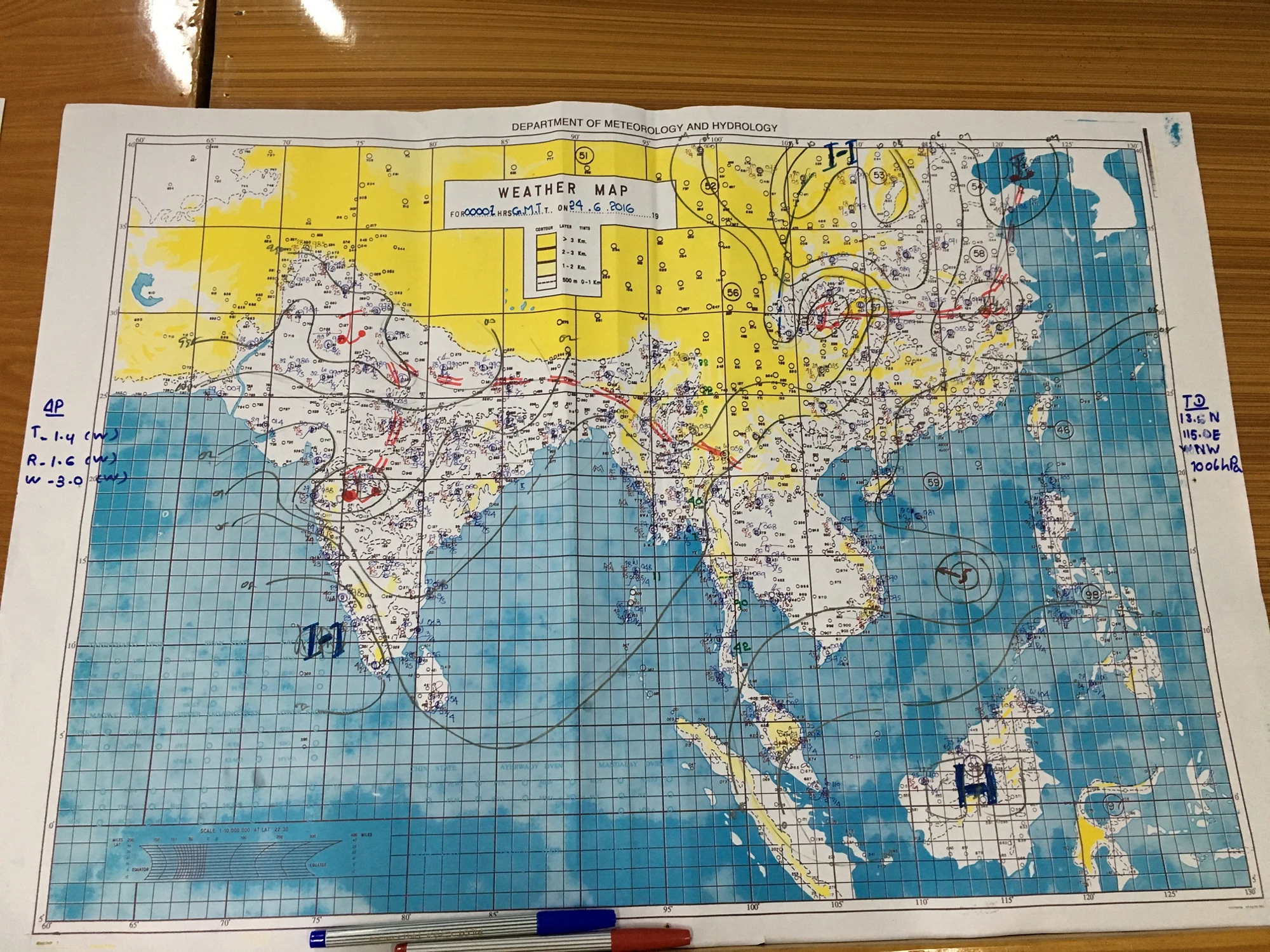Is it hot outside? Should I bring an umbrella?
Most of us don’t think much beyond these questions when we check the weather report on a typical day. But weather information plays a much more critical role than providing intel on whether to take an umbrella or use sunscreen. It can help manage the effects of climate change, prevent economic losses and save lives when extreme weather hits.
During the second IDA18 replenishment meeting in Nay Pyi Taw, I visited the Myanmar Department of Meteorology and Hydrology’s Multi-Hazard Early Warning Center to see how funding from IDA, the World Bank’s fund for the poorest, is helping the country modernize its systems for observing and forecasting weather through the Ayeyarwady Integrated River Basin Management Project.
The project is using the latest forecasting and communication technology, including mobile, to alert citizens to hazardous weather events.
According to David Rogers, a consultant working on the project, traditional weather services "used to forecast what the weather will be. Today we talk about what the weather will do."
In 2015, floods and landslides caused by Cyclone Komen led to an estimated drop in Myanmar’s GDP of 0.8 percent in 2015-16 and caused damage equivalent to 3.1 percent of the country’s GDP. An estimated 1.6 million people were displaced and 132 lost their lives.
IDA is helping the 77 countries eligible for IDA financing cope with climate change by bringing new solutions—such as better weather data and forecasting and cyclone-resistant houses and warning systems. The shift to modern hydro-meteorological services, early warning systems, and other preparedness measures is cost effective and is expected to help save lives in Myanmar as it has in other countries.
Bangladesh—where the deadliest cyclone in history killed up to 300,000 people in 1970—has become a model in disaster preparedness. With IDA’s support, the country’s investments in construction and repair of hundreds of cyclone shelters, rehabilitation of embankments, and implementation of early warning and hydromet systems helped 3 million people evacuate to safety when a cyclone hit in 2007.
Our support also helped India build shelters, plan evacuations, and conduct drills to prepare for extreme weather. When Cyclone Phailin struck the coast of Odisha in 2013, more than 1 million people were moved to shelters or safer buildings in record time. Less than 40 people died in the cyclone, a dramatic reduction compared to a cyclone of similar strength in 1999 that killed 10,000 people.
Myanmar, one of the poorest countries in Asia, is one of the most vulnerable to climate change and can be hit by as many as four cyclones a year. “Our people have lost lives, lost homes, lost livelihoods,” Daw Aung San Suu Kyi said in her remarks at the IDA18 replenishment meeting. “So what are we going to do about climate change which we cannot change back to what it used to be? We have to learn to cope with the future, we cannot keep looking back at the past.”
As the effects of climate change intensify, there's a growing concern about the impact of future disasters in low-income countries, and beyond, which is why we are focusing intensely on addressing climate change in the poorest countries.
We’ll continue our efforts to bring new solutions—such as disaster insurance and cyclone-resistant houses—as well as mitigate the impacts of climate change by finding innovative ways to harness energy, farm with less water and chemicals and with better seeds, and reduce carbon emissions.
With the support of our development partners, over the next three years, IDA is expected to also help countries generate 5 gigawatts of renewable energy—equivalent to the power generated by 35 million solar panels. These are just a few of the things we’re working on.
We know this is not enough, but building on IDA’s proven climate track record is a pretty good place to start.
For more on IDA, the World Bank’s Fund for the Poorest, follow us on Twitter at @WBG_Fin4Dev, or follow #IDAWorks.



Join the Conversation